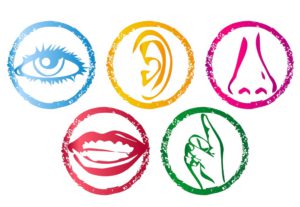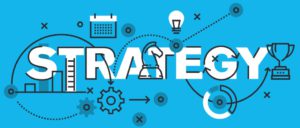- You are here:
- Home »
- Blog »
- Exploring Your Internal Map Of Reality (Series) »
- Exploring Your Internal Map of Reality Part 8 – Strategies (Part 1a)
Exploring Your Internal Map of Reality Part 8 – Strategies (Part 1a)
Another important part of the Internal Map Of Reality is called Strategies.
In military speak, the normal meaning of this word is ‘a general plan for defeating an enemy,’ and in the case of business or other human endeavours, ‘a general plan for achieving what you want.’
In terms of the Internal Map of Reality, a strategy is a sequence of external experiences and internal representations that lead to a specific outcome.
For instance, you see a car advertised. A strategy then comes into play that leads you to buy the car.
Similarly, when you go to the store to buy groceries, it started with a decision that you need more groceries and ends up with you checking them out and paying for them.
 Strategies can be likened to computer programs. They all have a sequence of events and they have decision points that lead to a conclusion or outcome.
Strategies can be likened to computer programs. They all have a sequence of events and they have decision points that lead to a conclusion or outcome.
If you remember the article on internal representations – modalities and submodalities , then strategies are a chain of these internal representations that lead to a specific outcome.
 Say you are in the store at the vegetable section and you see a bin of oranges. You compare it to an internal picture in your memory about what an orange should look like. Then you pick one up and test its weight (you may even weigh it on the scales if they are there). You press it to see if it is ripe enough. You might smell it as well. If it satisfies all your criteria you then add it to your shopping bag with the intent to buy it.
Say you are in the store at the vegetable section and you see a bin of oranges. You compare it to an internal picture in your memory about what an orange should look like. Then you pick one up and test its weight (you may even weigh it on the scales if they are there). You press it to see if it is ripe enough. You might smell it as well. If it satisfies all your criteria you then add it to your shopping bag with the intent to buy it.
This particular strategy involves several of our modalities: Visual external, Visual Internal (see it and compare it to your idea of an orange); Kinaesthetic: picking it up and feeling its weight, pressing it to test its ripeness); Olfactory (smelling it); Auditory digital – asking yourself if it satisfies your internal criteria for an orange. And if the store is doing a demonstration, you may even take a bite to taste it.
 Given there are 6 modalities (Auditory, Auditory Digital, Visual, Kinaesthetic, Olfactory and Gustatory) and that our processing occurs both as remembered and constructed, as well as there being 6 ways to communicate with the world, there are 18 different building blocks that can make up a strategy.
Given there are 6 modalities (Auditory, Auditory Digital, Visual, Kinaesthetic, Olfactory and Gustatory) and that our processing occurs both as remembered and constructed, as well as there being 6 ways to communicate with the world, there are 18 different building blocks that can make up a strategy.
Strategies Can Serve Or Not Serve
Strategies, like all the other components of the Internal Map Of Reality, can either serve you or not serve you.
For instance, if you went to a car dealership and bought a car just on seeing it, this probably wouldn’t serve you very well. Other criteria may be necessary before actually buying the car. But some people do behave this way, and strangely enough, it actually works for them.
It’s a bit like a recipe. If you want to make a curry, then adding a lot of sugar to it makes it something other than a curry, at least in the commonly accepted definition of it.
One of the best things about strategies is that they are portable.

For instance, to get good at your curry strategy, you could borrow someone’s recipe for a curry. Once you test the outcome, you could decide if this was a good recipe or if it needs changing. You might add more heat (e.g. chilli or other spices) or you may eliminate the heat completely.
The same occurs for any outcome you desire in life. For instance if you are chronically depressed, angry or experiencing some other undesired emotion, there is usually a strategy involved that leads to this state of affairs.
To fix things using the curry example above, simply change the recipe for your anger and it may just disappear.
The trick, however, is to be aware of how you are creating your anger, depression etc. It may be because you are doing things out of sequence, or because you are introducing elements that lead to the undesired outcome, or because there are crucial elements missing.
 Lets take the example of the car buying strategy above. For most people, just seeing a car and buying it straight away is a ‘recipe for failure’ (so to speak!) A few more elements need to be added to it to make it an effective strategy.
Lets take the example of the car buying strategy above. For most people, just seeing a car and buying it straight away is a ‘recipe for failure’ (so to speak!) A few more elements need to be added to it to make it an effective strategy.
For instance you might ask yourself ‘Do I need it’ and ‘Can I afford it?’ (Auditory Digital Internal). If the answer was yes to both, then you’d have a good reason to buy. If the answer to either is false, you may not buy it.
Even this may not be an effective strategy. What if, when you start to drive it home, you notice that the seats are very uncomfortable and it’s very hard to drive: the steering is unresponsive and the dashboard is in a very glaring shade of yellow. You just bought a lemon!
So to make this strategy better even still, you’d need to take a test drive.
Click here for the rest of this article.

